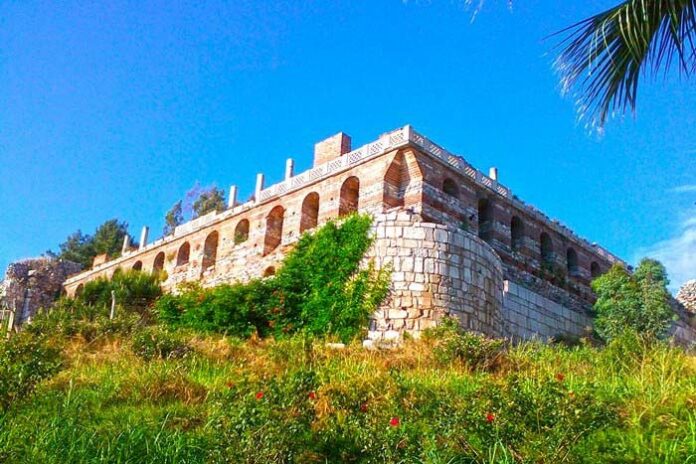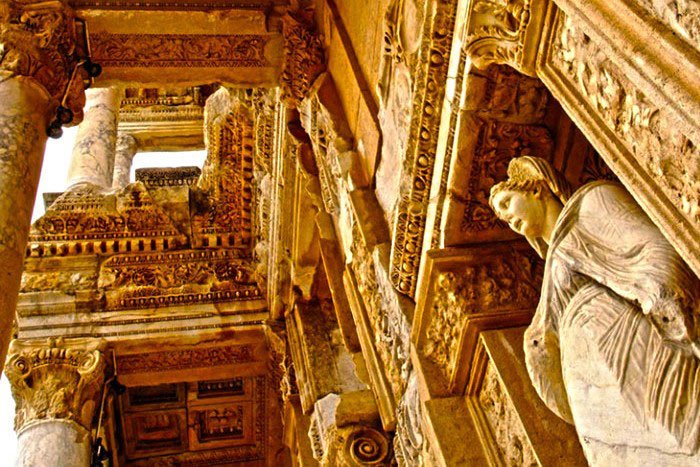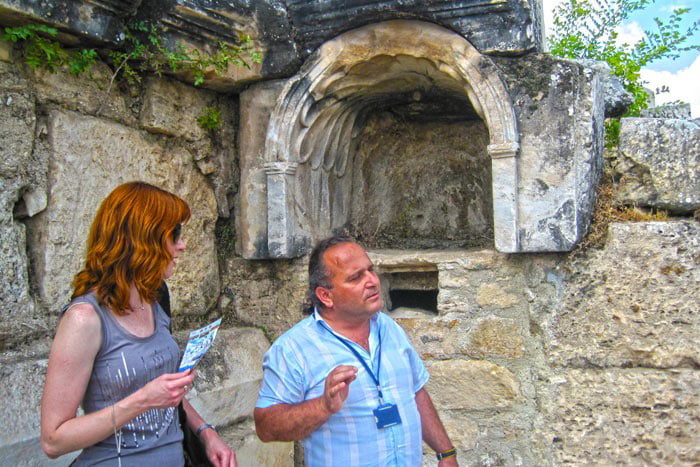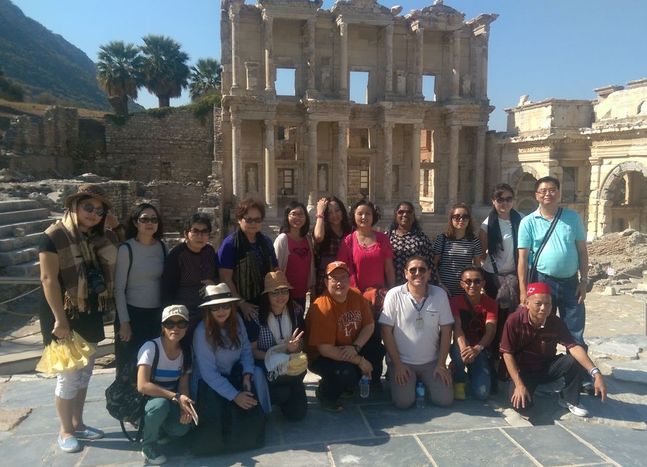Ephesus Walking Tour – Saint John Basilica
One of the main stops on an Ephesus walking tour is the Basilica of Saint John. This ancient church was built over the believed grave of the Apostle John. At first, a small church may have stood here. By the 5th century, a larger wooden-roof basilica replaced it.
This early basilica was destroyed by an earthquake. Later in the same century, Emperor Justinian and Empress Theodora built a new one. They also built Hagia Sophia in Byzantium and the Monastery of Saint Catherine in Mount Sinai. These impressive buildings reflect their power and faith. Learn more at sightseeing Ephesus.
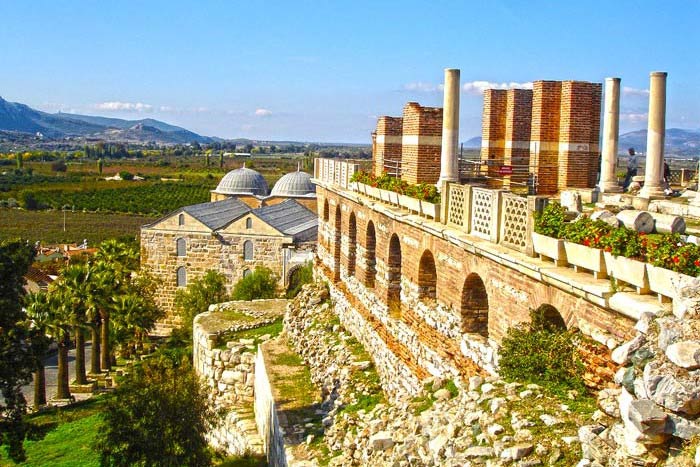
The Tomb and the Church Interior
Inside the church ruins, the spot believed to be Saint John’s tomb lies under four marble columns. These columns date back to the Middle Byzantine period (10th–12th centuries). When the crypt was first opened, three tombs were found. The one in the center was believed to be John’s.
However, during the 13th century, his relics were moved to Byzantium. Since then, the tomb has remained empty. Still, this sacred place remains a highlight of every Ephesus walking tour.
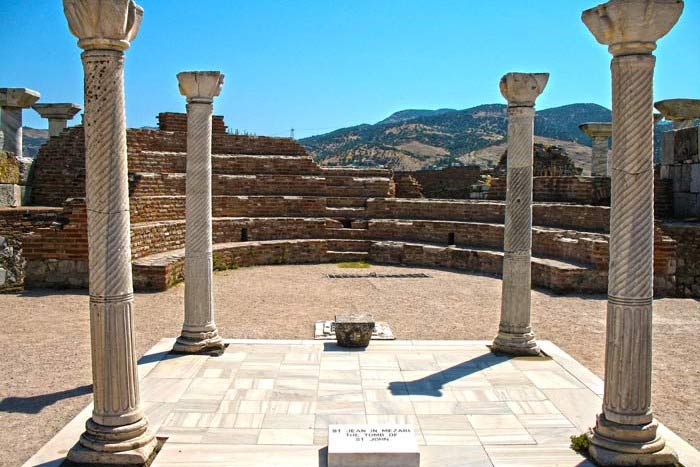
The Ancient Baptistery
The Baptistery, located on the church’s north side, is even older than the Justinian basilica. At the center, there is a round baptism pool in a cross-shaped layout. Baptism candidates entered from one side and left from the other using steep steps.
On both sides of the cross, two square pools held clean water. Halls at each end of the Baptistery were used for rituals before and after baptism. Water channels used for filling the pools are still visible on the floor. These details bring life to history and are part of the charm of a visit. Explore more during the kukeri carnival season.
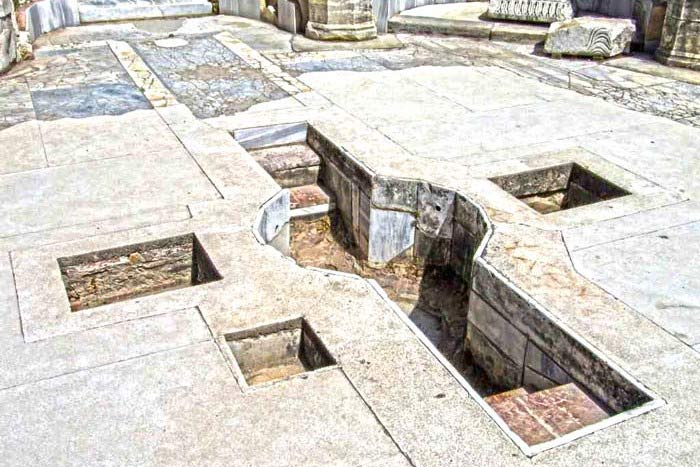
Later, after Emperor Justinian completed his basilica, the Baptistery was no longer used. Its waters were redirected to a beautiful marble fountain at the entrance. That fountain still amazes visitors on their Turkey sightseeing journey.
The Treasury Room
In the basilica’s north part, a circular room called the Skeuophylakion was built. It had two floors and small corner rooms. Special niches were made to store sacred items and church treasures. Only one other round treasury room exists—in Hagia Sophia. To learn more, feel free to contact us.
